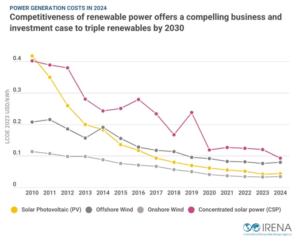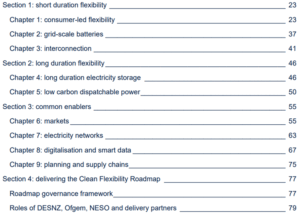Climate conspiracies outpace safety alerts, boosting property values and elephant-inspired concrete
In this issue:
Climate conspiracies outpace safety alerts
In a sign of the times, a report from the Centre for Countering Digital Hate informs us in times of crisis, conspiracy theories spread more quickly through social media than safety alerts. The study looked at social media traffic on X, Meta and YouTube following the LA wildfires and hurricanes Helene and Milton. The report claims social media platforms “amplified conspiracy theorists while sidelining vital emergency information”. Meta lacked fact checks or legitimate community notes on 98% of posts, X on 99% of posts and YouTube on 100% of posts. During the LA wildfires, misleading posts from the notorious US radio host Alex Jones amassed more views on X than the combined reach of the Federal Emergency Management Agency, the LA Times and ten other major news outlets and emergency agencies. Not only a sad state of affairs but potentially dangerous.
Energy ratings boost property values
Home energy ratings boost property values and encourage efficiency retrofitting, according to a study of numerous schemes operating across the US. The ACEEE (American Council for an Energy-Efficient Economy) has just published an analysis of regulated and voluntary schemes and found home values are lifted for energy efficient housing, other things being equal. They are also quicker to sell. Unsurprisingly, mandatory schemes work better than voluntary schemes. The paper provides some useful tips on designing and implementing a successful scheme, which policymakers in NZ should take on board.
Cost of renewables continues to fall
Reports from the UN and IRENA confirm the unrelenting march of renewables. The IRENA report focuses on reducing costs and concludes 91% of newly commissioned utility-scale renewable capacity in 2024 delivered power at a lower cost than the cheapest new fossil fuel-based alternative. Meanwhile, the UN reports renewables made up 92.5% of all new electricity capacity additions and 74% of electricity generation growth in the year. It goes on to say while renewables have passed the tipping point for cost and installations, their growth still lags where it needs to be to attain global emissions targets.
Roadmap to a clean, flexible electricity system
The UK Government, along with its regulator and system operator has just published a roadmap to see a clean, flexible and consumer-focused electricity system, with 95% renewable generation, by 2030. The roadmap talks to the integration of grid and small scale renewables, distributed generation, system resilience and markets. An essential read for our systems operator, regulator and central government.
Tracking SDG7
The 2025 update on how we’re tracking against the UN’s 7th sustainable development goal – to ensure access to affordable, reliable, sustainable and modern energy for all – has just been published and tells us progress is being made. The number of people without access to electricity has declined from the 958 million of 2023 to now stand at 666 million. The strongest progress was seen across central and southern Asia and the poorest in sub-Saharan Africa. 92% of the world’s population currently has access to electricity.
China announces world’s biggest hydro project for Tibet
When completed, the project on the Yarlung Tsangpo River will generate around 300 billion kilowatt-hours of electricity a year, roughly three times that of the Three Gorges Dam. The dam will comprise five, cascade hydro-power stations and cost an estimated US$167 billion (NZ$276bn). Inevitably, it has raised concerns about water access for regions of India and Bangladesh.
Microsoft turns to poo
Perhaps a little unfair for a headline but accurate in its way. In an effort to combat its ballooning emissions problem from AI, Microsoft has just announced a 12 year deal to sequester 4.9 million tonnes of carbon in the form of a slurry of human and farm waste by burying it 1,500 metres underground in deep rock formations.
Elephant inspired, temperature regulating concrete
When looking to improve the energy performance of concrete, scientists from Drexel University (US) turned to elephants for inspiration. Of course, elephant ears act as a cooling mechanism for the mighty beasts and the scientists applied copied principles into concrete manufacture by embedding concrete with a network of tiny channels, or vasculature, filled with paraffin. The structure allows the concrete to heat and cool passively and slows heating and cooling by 1C to 1.25C per hour.
Did you know …….
The gas wasted in flaring each year is equivalent to Africa’s total gas consumption? Flaring increased in 2024, according to a recent World Bank report, reaching 151 billion cubic metres, the highest level since 2007. That works out at about 389 million tonnes of CO2e just up in flames.


